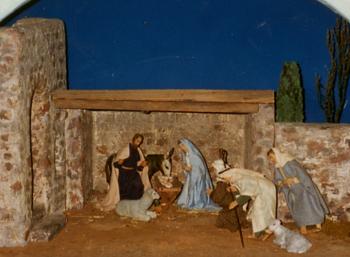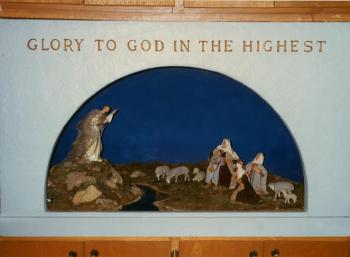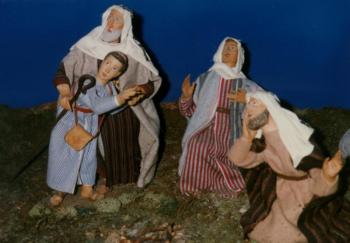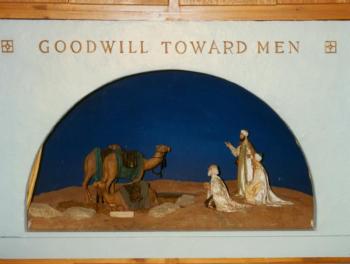A creche fit for a president
Not many of us can say one of our parents has had their art displayed at the White House. But East Boothbay resident and artist Barbie Fischer Eldred, and her brother, York Fischer of Sawyer’s Island, can.
Both of their parents were sculptors, but it was their mother, Hanna Weil Fischer-Binder, whose carved crèche figures were given to President Dwight D. Eisenhower and family in 1954.
Raymond and Mildred Pitcairn commissioned Fischer-Binder in 1954 to carve the crèche as a gift for their friends, the Eisenhowers. Pitcairn had discovered Fischer-Binder's art in 1948 at the Art Alliance in Philadelphia.
In 1957, Pitcairn commissioned her to carve more figures for the first family. In total, Fischer-Binder crafted 14 figures — the infant Jesus, Mary, Joseph, the three Wise Men, The Angel of the Lord, six shepherds and a shepherd boy. Mrs. Eisenhower displayed the Nativity scenes in the East Room of the White House from 1954-1960.
When the Eisenhowers left the White House, they settled on a farm in Gettysburg and became members of the Gettysburg Presbyterian Church. Eisenhower left all three Nativity scenes to the church in his will.
“They were displayed at the church for years, until the church was renovated,” York explained. “There wasn't space for it anymore.”
The scenes were donated to the National Park Service of Gettysburg and displayed at the Gettysburg Battlefield Visitor's Center for several years — and at the family farm, now a museum.
Eventually it was placed in storage for 15 years.
In 2014, all three scenes were once again displayed in the visitor's center. They are there again this year through Dec. 31.
Visit www.glencairnmuseum.org/newsletter-news/december-2014-from-the-white-hou... for more on this amazing exhibit.
Barbie and York's mother was a native of Munich, Bavaria, Germany. Even as a young girl, Hanna Weil knew she was going to be a carver. She was born with artistic talent that was honed at the Munich Art School and as an apprentice to both a silversmith and goldsmith.
In addition to silver and gold, throughout her artistic life Mrs. Fischer-Binder also worked with wax, silver, gold, ivory and woods. She was also an expert in enameling, drawing, ceramics and casting.
Carving crèches, Nativity scenes, was her specialty. In Germany, hand-carved crèches were done in wax and most families had one. But, as Barbie noted, eventually the figures began to break down. When the family immigrated to Bucks County, Pennsylvania in September 1939, they brought their crèche with them. Barbie was just age 2-1/2 and York, 4. Their older sister, now deceased, was away at boarding school and did not join the family until 1940.
In Pennsylvania, Fischer began carving crèche figures out of dogwood.
“It was a wood that most resembled human skin,” explained York.
Her attention to detail is still impressive. Each face is distinctive, the body language, and body features, well defined — right down to the nails on fingers and toes.
The expressions on the faces of each figure reflect the part of the Nativity story they represent: the shepherds do appear “... sore afraid,” humbled and astounded; The Wise Men look in awe of, and curious about, that large, bright star in the sky; and the Angel's supernatural qualities are conveyed through height, a serene and all-knowing countenance.
“She was always sitting at the table carving. And she used her dentist's old drills,” Barbie said.
Fischer also made all of the clothing in rich fabrics, held together with invisible stitches. Again, that attention to detail … the flow of the robes worn by the Wise Men, the Angel's gown.
Barbie has the last crèche her mother carved for her and her family when she and her late husband Ken Eldred, were living in California in the early 1960s.
“The first year we got the angel,” Barbie said, looking at the figures displayed in her home. “A few years later she gave me the rest of the crèche. I just love them. I think they are the best pieces she ever did.”



































